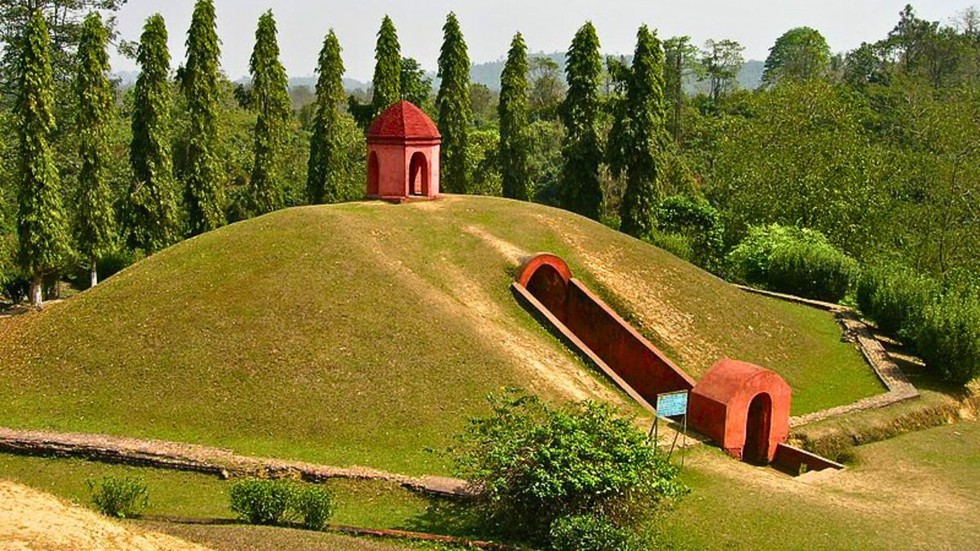About Ahom Dynasty:
- It (1228–1826, called Kingdom of Assamin medieval times) was a medieval kingdom in the Brahmaputra valley in Assam that maintained its sovereignty for nearly 600 years and successfully resisted Mughal expansion in North-East
- It was able to establish its suzerainty over the Brahmaputra valley and had a profound effect on the political and social life in the region.
- It was established by Sukaphaa, a Shan prince of Mong Mao who came to Assam after crossing the Patkai Mountains.
- Though it came to be called the Ahom kingdom in the colonial and subsequent times, it was largely multi-ethnic, with the ethnic Ahom people constituting less than 10% of the population toward the end.
- The people of the kingdom used to call them 'Chaopha' or 'Swargadeo'.
- The kingdom came under repeated Mughal attacks in the 17th century, and on one occasion in 1662, the Mughals under Mir Jumla occupied the capital, Garhgaon.
- The Mughals were unable to keep it, and finally, during the battle of Saraighat in 1671, the Ahoms led by Lachit Borphukan successfully defeated the Mughals.
- Borphukan is mainly known for his leadership in this battle.
- By 1682, the Mughal influence in the region was completely eradicated.
- Following a period of confusion, the kingdom got itself the last set of kings, the Tungkhungia kings, established by Gadadhar Singha.
- The kingdom became weaker with the rise of the Moamoria rebellion, and subsequently fell to a succession of Burmese invasions.
- With the defeat of the Burmese after the First Anglo-Burmese War and the Treaty of Yandabo in 1826, control of the kingdom passed into British (East India Company) hands.
What are Moidams of Ahom dynasty?
- The Moidams (also spelt as Maidam) are burial mounds of Ahom kings, queens, and nobles in Assam.
- The name "Moidam" comes from the Tai words "Phrang-Mai-Dam" or "Mai-Tam," meaning to bury and the spirit of the dead.
- These mounds are distinct for their architecture and reflect the Ahom’s foreign influences.
- They are found throughout upper Assam, with Charaideo, the first Ahom capital, being the main necropolis.
- Each Moidam has three main parts:
- A vault or chamber where the body is placed.
- A hemispherical earthen mound covering the chamber.
- A brick structure (Chaw-chali) on top for annual offerings and an octagonal boundary wall with an arched gateway.
- Originally, vaults were made of wooden poles and beams but were replaced with stone and brick during the reign of King Rudra Singha (CE 1696-1714).
- Inside the vault, the dead were buried with their belongings, including clothes, ornaments, and weapons.
